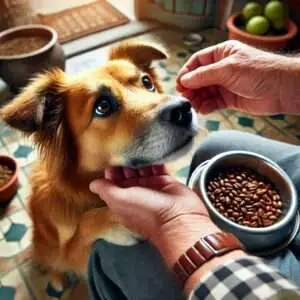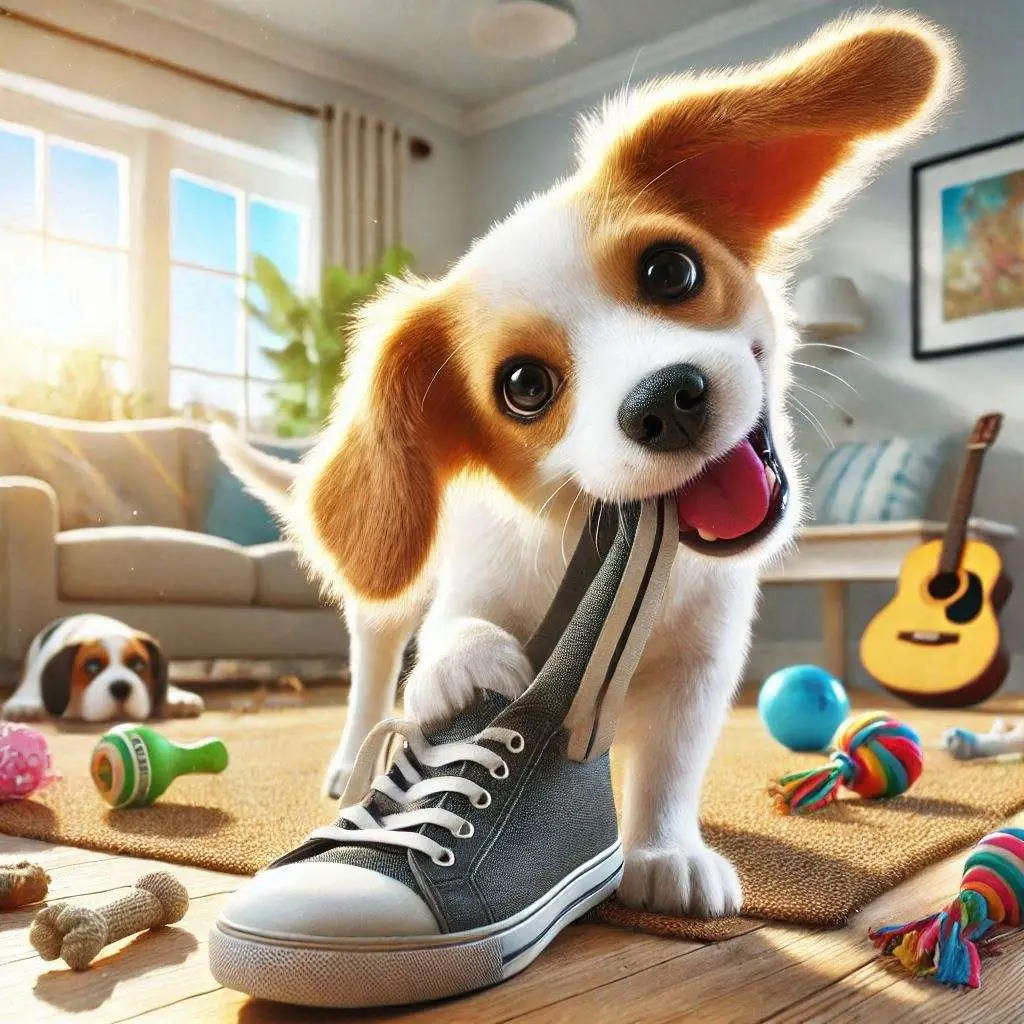A well-behaved dog makes for a happier home, but sometimes our furry companions develop troublesome behaviors. Top bad habits in dog ownership include excessive barking, chewing on furniture, jumping on guests, and pulling on the leash during walks. Addressing your dog’s undesirable behaviors promptly is essential for maintaining a peaceful and well-structured household. Understanding the root causes of top bad habits in dog behavior—such as boredom, lack of exercise, or inconsistent training—can help you implement effective solutions. By using positive reinforcement and consistent training, you can correct top bad habits in dog and ensure a well-mannered, obedient pet.
1. Inappropriate Chewing
Dogs naturally explore the world through chewing, which can become problematic when targeting furniture or personal items.

Solution:
- Provide Appropriate Chew Toys: Offer a variety of toys to satisfy their chewing instincts.
- Positive Reinforcement: Praise and reward your dog when they choose the correct items to chew.
- Supervision and Redirection: Monitor your dog and redirect it to appropriate items if it begins chewing on unsuitable objects.
2. Excessive Barking
While barking is a natural form of communication for dogs, excessive barking can be disruptive.

Solution:
- Identify Triggers: Determine what prompts the barking—such as doorbells, other animals, or boredom.
- Training Commands: Teach commands like “quiet” or “enough,” rewarding compliance.
- Environmental Management: Limit exposure to stimuli that cause barking, and provide engaging toys to reduce boredom.
3. Jumping on People
Dogs may jump on people to seek attention or express excitement, but this behavior can be unwelcome or even dangerous.

Solution:
- Teach Alternative Behaviors: Train your dog to sit when greeting people.
- Withhold Attention: Ignore your dog when they jump; only provide attention when all four paws are on the ground.
- Consistent Responses: Ensure all family members and visitors follow the same guidelines to prevent mixed signals.
4. Pulling on the Leash
Leash pulling can make walks unpleasant and potentially hazardous.

Solution:
- Use Proper Equipment: Consider a chest-led harness to discourage pulling.
- Training Techniques: Stop walking when your dog pulls, resuming only when the leash is slack. Alternatively, change direction to teach your dog to pay attention to you.
- Positive Reinforcement: Reward your dog for walking beside you without pulling.
5. Digging
Dogs may dig out of boredom, to seek comfort, or due to instinctual behaviors.

Solution:
- Provide a Designated Digging Area: Allocate a specific spot where your dog can dig and encourage its use by burying toys or treats there.
- Increase Physical and Mental Stimulation: Ensure your dog receives adequate exercise and mental enrichment to reduce the urge to dig out of boredom.
- Modify the Environment: Supervise your dog in the yard and use deterrents in areas where digging is undesirable.
6. Begging for Food
Feeding your dog from the table encourages begging, which can lead to obesity and digestive issues.

Solution:
- Establish Boundaries: Do not feed your dog from the table, and ensure all family members adhere to this rule.
- Create a Separate Space: Train your dog to stay in a designated area during mealtimes.
- Provide Distractions: Offer a chew toy or puzzle feeder during family meals to keep your dog occupied.
7. House Soiling
Inappropriate elimination indoors can be due to incomplete house training, medical issues, or anxiety.

Solution:
- Consult a Veterinarian: Rule out medical causes for the behavior.
- Reinforce House Training: Establish a consistent schedule for outdoor bathroom breaks, and reward your dog for eliminating in the appropriate area.
- Supervision and Confinement: Use crates or confined spaces when you cannot supervise your dog to prevent accidents.
8. Separation Anxiety
Dogs with separation anxiety may exhibit destructive behaviors when left alone.

Solution:
- Gradual Desensitization: Practice leaving your dog alone for short periods, gradually increasing the duration to build their confidence.
- Create a Safe Space: Provide a comfortable area with familiar items where your dog feels secure.
- Consult Professionals: Seek guidance from a veterinarian or certified dog behaviourist for severe cases.
Addressing these behaviours with patience and consistency will lead to a well-behaved and happy canine companion.
- Anatomy
- Anesthesiology
- Animal Husbandry
- Animal Sciences
- Avian
- Camelidae
- Canine
- Cattle
- Clinical Medicine
- Clinical Pathology
- Clinical Sciences
- Clinical Surgery
- Dairy Technology
- Epidemiology
- Equine
- Feline
- Fun Facts
- Genetics
- Goat
- Medicine
- Microbiology
- Microbiology
- Non Ruminants
- Nutrition
- Parasitology
- Pathology
- Pharmacology
- Physiology
- Poultry Husbandry
- Public Health
- Radiology
- Reproduction
- Ruminants
- Sheep
- Uncategorized
- Veterinary Sciences
- Wild Animals
- Dog Gum Diseases: A Complete Guide
- Top Pet Grooming and Care Services in Islamabad 2025
- Cat Tail Language: Read Your Cat’s Emotions Through Tail Movements
- Cat Ear Mites: Complete Veterinary Guide
- How to Trim Dog Nails and Stop Bleeding: Complete Expert Guide
